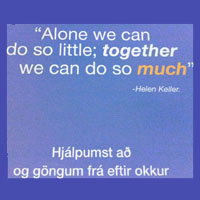Rebranding a District: the Breiðholt Project in Reykjavik
Abstract
Cities have gained increasing attention from government, researchers, and industry. The focus upon smarter and more efficient cities is important, but incomplete. Against this backdrop, COST Action builds on a European Science Foundation exploratory workshop on the emerging theme of smart and liveable cities. COST Action’s framework for People Friendly Cities in a Data Rich World acknowledges that the city is largely the product of top-down expertise, and a process in which the citizen plays a marginal role. Despite this top-down approach, citizens have had to build personal and collective biographies from the infrastructure of the city. This paper explores how the community of Breiðholt, Reykjavik, is being transformed from a disadvantaged suburb, characterised as a ‘ghetto’, into a thriving community where citizens play a central role in decision-making. This paper presents the outcomes of a fieldwork experience, undertaken in Breiðholt as part of COST Action’s Winter Training School, focused on the drivers behind, actions, and benefits of the Breiðholt Project and the Breiðholt Congress. In making recommendations for the Project and Congress, and other community-based initiatives, this paper encourages the sharing of best practices among different departments of the city, and to better utilise bridge makers (key stakeholders/community leaders) to build trust through face-to-face interactions with citizens.
Downloads
References
Baruchello, G. (2014). The Picture—Small and Big: Iceland and the crises. Nordicum-Mediterraneum, 9(3), 1-10.
Bojica, I., Marra, G. & Naydenovac V. (2016). Online tools for public engagement: case studies from Reykjavik. In Colombo G., Lombardi P., Mondini G. (eds.), INPUT 2016 9th International Conference on Innovation in Urban and Regional Planning, e-agorà for the transition toward resilient communities, Torino.
Busi, R. (2009). For a Safer City. A Friendlier City. And a More Beautiful City. TeMA journal of Mobility, Land Use and Environment, Selected Papers 2009, 3(2010): 39-46
Conolly, J. & Whelan, C. (2012). World Films Locations: Reykjavik. Bristol: Intellect Books.
COST (2012). People Friendly Cities in a Data Rich World. Available at: http://www.cost.eu/COST_Actions/tud/TU1204. Accessed 11th October 2016.
Danielsson, J. & G. Zoega (2009). Entranced by Banking. Available at: http://www.voxeu.org/index.php?q=node/3029. Accessed 11th October 2016.
Evans, P. B. (2002). Livable cities?: Urban struggles for Livelihood and Sustainability. California: University of California Press.
Hollands, R. G. (2008). Will the Real Smart City Please Stand Up? Intelligent, Progressive or Entrepreneurial?. City, 12(3), 303-320. doi: http://dx.doi.org/10.1080/13604810802479126
Iceland Review (2012). Police Nominated for Social Media Award. Available at: http://icelandreview.com/news/2012/07/20/police-nominated-social-media-award. Accessed 11th October 2016.
Iceland Review (2015). Immigrant Proportion of Icelandic Population Grew in 2014. Available at: http://icelandreview.com/news/2015/05/29/immigrant-proportion-icelandic-population-grew-2014. Accessed 11th October 2016.
Prewitt V. (2011). Working in the cafè: lessons in group dialogue, In The Learning Organization, 18(3), 189 - 202
Pierce, J., Martin, D. G., & Murphy, J. T. (2011). Relational Place-making: The Networked Politics of Place. Transactions of the Institute of British Geographers, 36(1), 54-70. doi: 10.1111/j.1475-5661.2010.00411.x
Sampson, R., & Gifford, S. M. (2010). Place-making, Settlement and Well-being: The Therapeutic Landscapes of Recently Arrived Youth with Refugee Backgrounds. Health & Place, 16(1), 116-131. doi: http://dx.doi.org/10.1016/j.healthplace.2009.09.004
Sanoff, H. (2000). Community participation methods in design and planning. New York: J. Wiley & Sons
Slocum, N. (2005), Participatory methods toolkit. A practitioner’s manual, King Baudouin Foundation and the Flemish Institute for Science and Technology Assessment. Available at: http://archive.unu.edu/hq/library/Collection/PDF_files/CRIS/PMT.pdf. Accessed 16th November 2016.
Skaptadóttir, Unnur D. (2011). The Context of Polish Immigration and Integration in Iceland. In Budyta-Budzyńska, M. (Ed.) Integration or Assimilation? Polish Immigrants in Iceland. Warsaw: Scholar. pp. 18-28.
Statistics Iceland (nd). Urban Nuclei and Zip Codes. Available at: http://www.statice.is/Statistics/Population/Urban-nuclei-and-zip-codes. Accessed 11th October 2016.
The World Cafè Community Foundation (2015), A quick reference guide for hosting World Cafè. Available at: http://www.theworldcafe.com/wp-content/uploads/2015/07/Cafe-To-Go-Revised.pdf. Accessed 16th November 2016.
Tiboni, M. & Rossetti S. (2012). L’utente debole quale misura dell’attrattività urbana, TeMA Journal of Land Use, Mobility and Environment, 5(3), 91-102
Vaiman V., Sigurjonsson, T.O., & Davídsson, P.A. (2011) Weak Business Culture as an Antecedent of Economic Crisis: The Case of Iceland. Journal of Business Ethics. 98(2), 259-272. doi: 10.1007/s10551-010-0546-6.
Villanueva-Rosales, N., Cheu, R.L., Gates, A., Rivera, N., Mondragon, O., Ferregut, S.C.C., Carrasco, C., Nazarian, S. & Taboada, H. (2015). A Collaborative, Interdisciplinary Initiative for a Smart Cities Innovation Network. In Smart Cities Conference (ISC2), 2015 IEEE First International. 1-2. doi: 10.1109/ISC2.2015.7366179
Vinnumálastofnun (2007), Erlent starfsfólk á íslenskum vinnumarkaði. Available at: http://www.vinnumalastofnun.is/files/Erlent%20starfsf%C3%B3lk%20%C3%A1%20%C3%ADslenskum%20vinnumarka%C3%B0i%20haust%202007_1728410651.pdf. Accessed 11th October 2016.
Washburn, D., Sindhu, U., Balaouras, S., Dines, R. A., Hayes, N., & Nelson, L. E. (2009). Helping CIOs Understand “Smart City” Initiatives. Growth, 17(2), 1-17.
Wilkinson, C. (2016). The Winter Training School: Co-creating Urban Spaces. Available at: http://thetrustmap.org.uk/the-winter-training-school-co-creating-urban-spaces/. Accessed 11th October 2016.

Copyright (c) 2016 Tema. Journal of Land Use, Mobility and Environment

This work is licensed under a Creative Commons Attribution 4.0 International License.
Authors who publish in this journal agree to the following:
1. Authors retain the rights to their work and give in to the journal the right of first publication of the work simultaneously licensed under a Creative Commons License - Attribution that allows others to share the work indicating the authorship and the initial publication in this journal.
2. Authors can adhere to other agreements of non-exclusive license for the distribution of the published version of the work (ex. To deposit it in an institutional repository or to publish it in a monography), provided to indicate that the document was first published in this journal.
3. Authors can distribute their work online (ex. In institutional repositories or in their website) prior to and during the submission process, as it can lead to productive exchanges and it can increase the quotations of the published work (See The Effect of Open Access)
